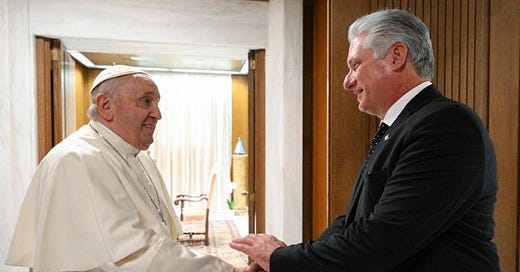On June 20, 2023, Cuban President Miguel Díaz-Canel was received in the Vatican for a private audience by Pope Francis. Following the 37-minute encounter, Díaz-Canel reported on Twitter that it was a frank conversation, in which ample agreements were confirmed with respect to urgent issues of the international agenda for humanity.
A historic conflict not well understood
In the early 1960s, the Cuban Revolutionary Government and the Cuban Catholic Church entered conflict. The issue was not the right of Catholics to practice their religion, nor was there repression of the Church by the Cuban Revolutionary Government. Rather, the conflict emerged from the pervasive anti-communism in the Cuban Catholic Church and its participation in the counterrevolution directed from the United States.
Anticommunist ideology was an important dimension of the neocolonial republic at the time of the triumph of the Cuban Revolution in 1959. Anti-communist ideology was, in the words of Cuba…



